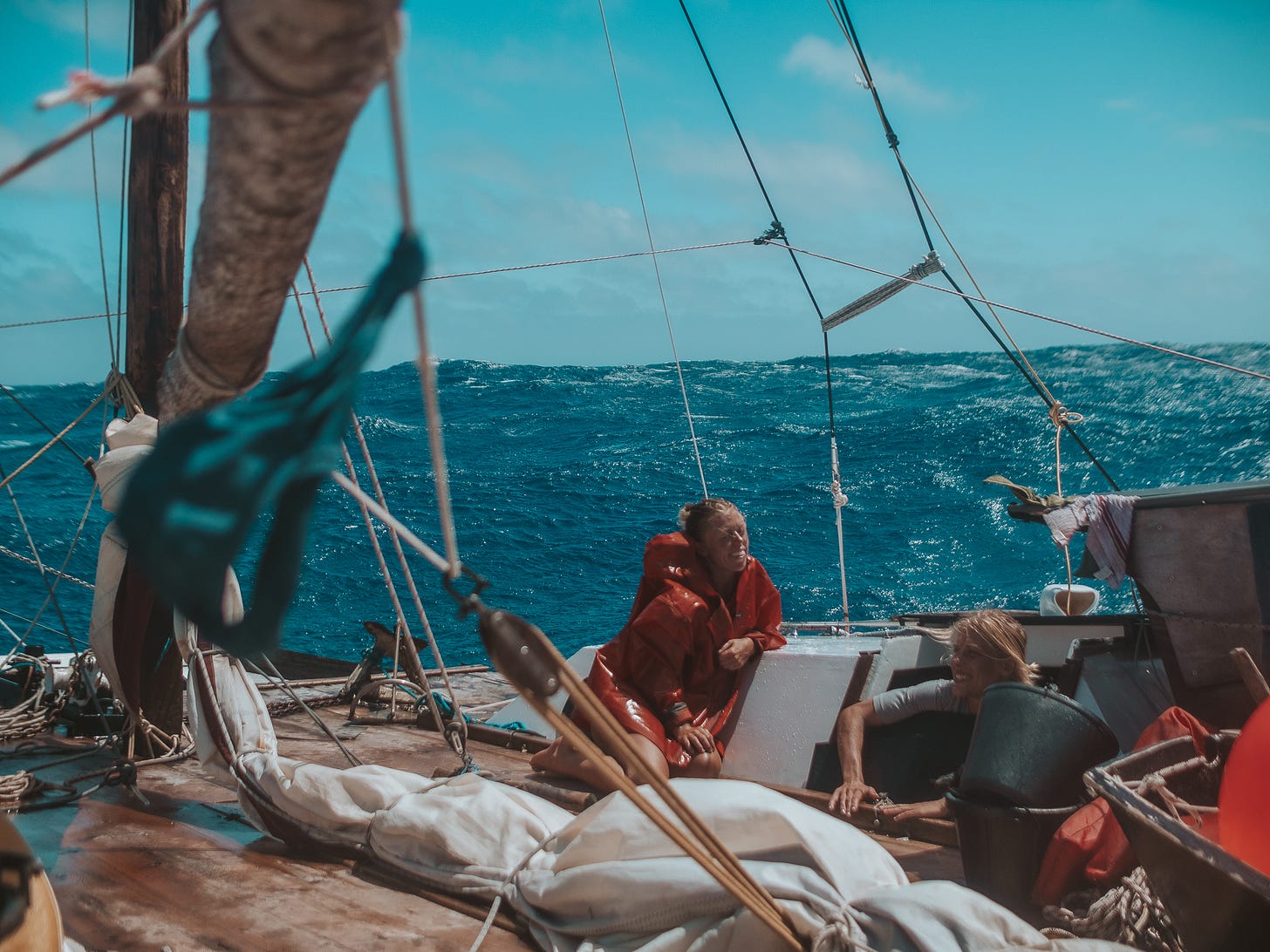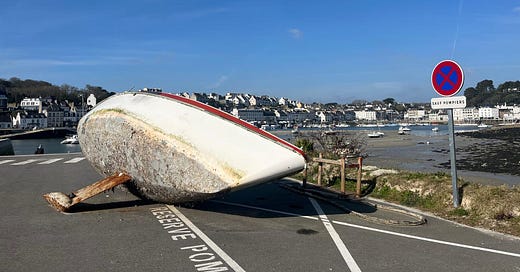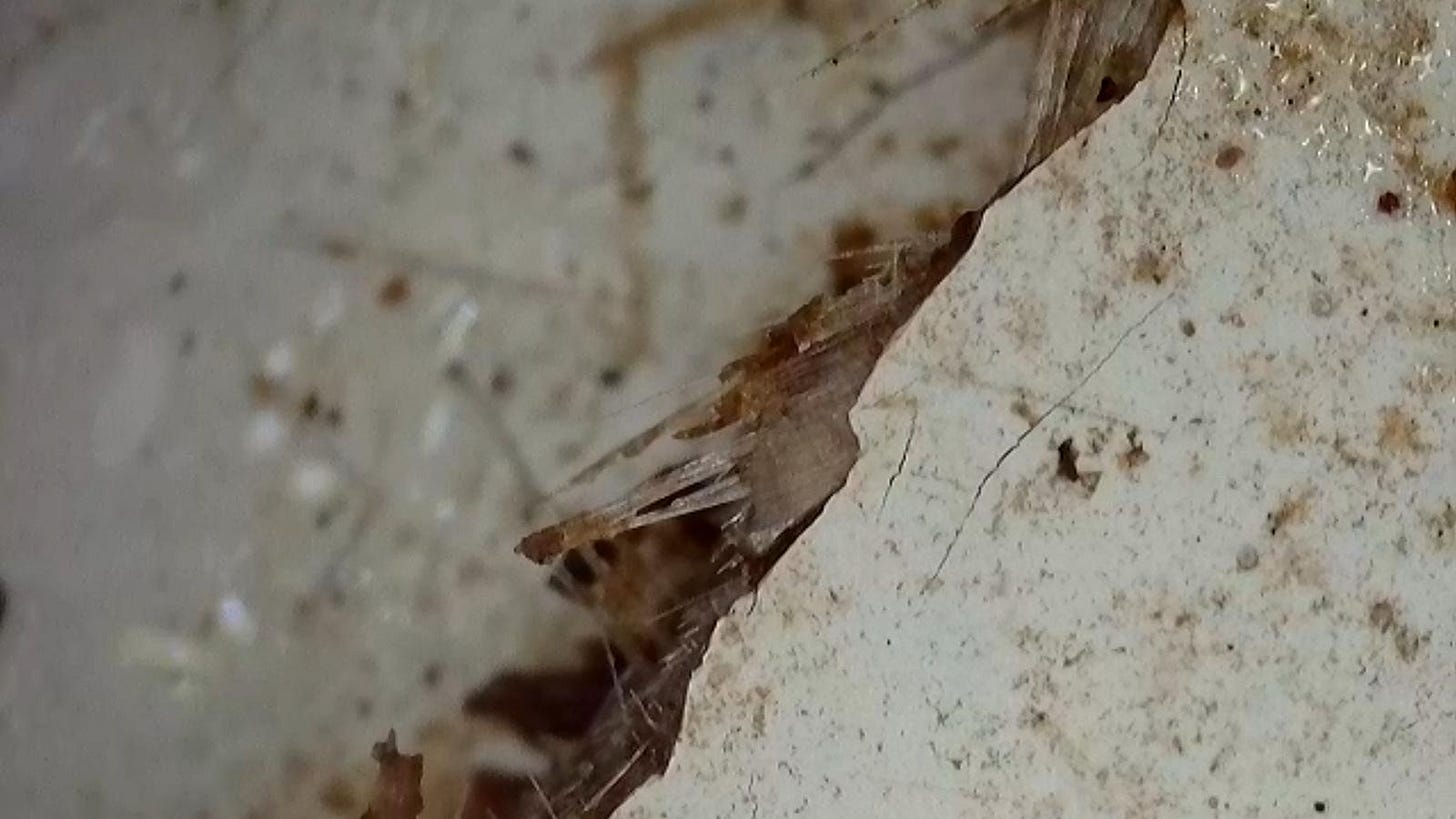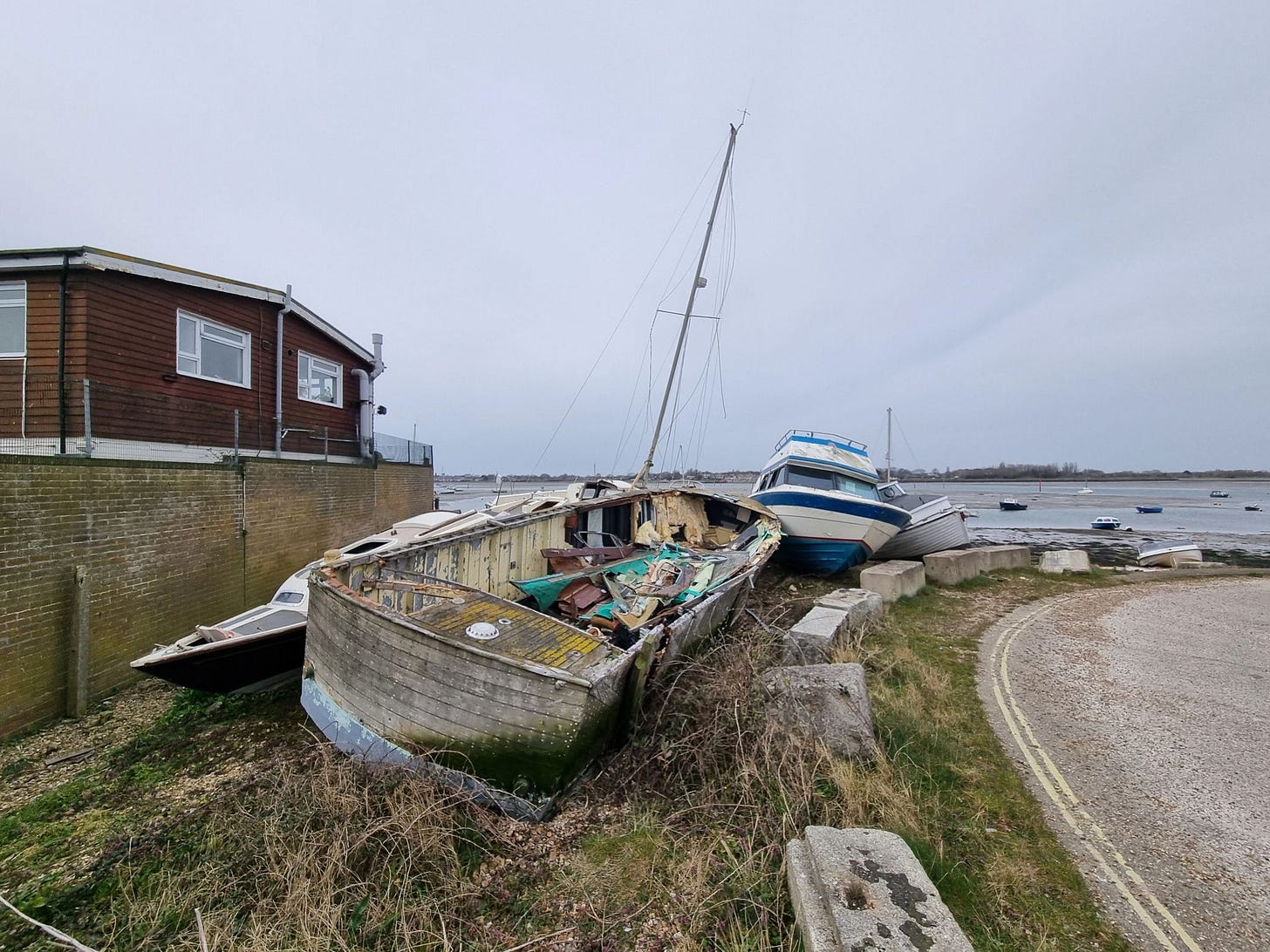Re-Storying 'Ghost' Boats
Boat wrecks under the microscope and the local heroes getting sh*.t done
Hi Everyone,
After weeks of blissful Spring weather here in Finistère, Brittany (France), a low-pressure system snuck in and blanketed our little slice of paradise under thick cloud and rain with a firm side of regular gales for the past two weeks. It seems the worst is behind us now. The forecast for next week is superb, just in time for the arrival of our guests: Kiana, Laerke and Alizé from Women & the Wind, and Hanneke Boon (Wharram Designs), all whom will be joining us for a week as we all tour the documentary that has begun making waves since its World Premiere last Saturday in North Carolina (USA).
During a brief pause in the rain, the kids and I drove down to the harbour in Audierne—technically on the Plouhinec side of the Goyen River—to test out the handheld 4K Bluetooth microscope Dr. Corina Ciocan had just sent us. Our target: a wreck we’ve been keeping an eye on for some time now. The boat, Atoll, was abandoned at the top of the boat ramp, halfway between the marina and the river mouth—within a gust’s reach of residential housing and tucked beside the fish processing plant. It first caught our attention in early March, during a Spring Equinox clam and mussel forage. I’d documented it then for the database we’re building with the University of Brighton and Tokyo University of Technology as part of our ReTISS citizen science initiative (more on this below). This time, though, I was able to collect microscopic images, zooming in on cracks where the fiberglass appears to have become exposed.
Video: a closer look at Atoll on our first inspection in March, 2025. If you do spot an abandoned or wrecked boat you can collect data such as its geo-location, photos, and short site surveys, and upload it to our temporary database on AirTable HERE. We are currently developing a custom database with Professor Uda in Tokyo, and will shortly be merging the existing data to the new platform, which will also include interactive mapping, with data made publicly accessible.




What is ReTISS?
Regenerative Tides: Sailing for Solutions (ReTISS) is a multidisciplinary citizen science initiative combining research, storytelling, and community engagement to address the environmental and health impacts of abandoned fiberglass (GRP) boats. We aim to empower coastal communities to actively participate in data collection, environmental education, and advocacy, driving sustainable waste management and regenerative design in the marine industry.
What We Do?
We engage coastal communities in mapping, monitoring, and addressing the environmental impacts of abandoned fiberglass boats through data collection, advocacy, and storytelling.
How We Engage?
We map end-of-life boats and train citizen scientists in environmental testing using handheld Bluetooth microscopes and develop educational materials to empower communities in data collection.
Why ReTISS?
The initiative seeks to drive solutions for sustainable waste management and regenerative design in the marine industry. Currently, there is a critical lack of data on the extent of fiberglass contamination, making it difficult to assess the full impact on marine ecosystems and human health. The project has the potential to uncover a massive contamination issue — one that could affect the seafood we consume, as microfiberglass particles enter the marine food chain through shellfish and other aquatic organisms.
Where Are We Working?
We have begun data mapping in Brittany, France, where the FSL is based and abandoned boats are a visible issue. We aim to expand through networks in other European coastal regions and Small Island Developing States, where fiberglass boat disposal is a growing concern. Non-financial partners in the UK, Japan, and Australia, along with support from the Women & the Wind Foundation (USA/Global), are helping with our plans to scale up the initiative globally.
News from Langstone Harbour
We had the privilege of meeting Langstone Harbour’s Deputy Harbour Master Robert Dunford, and Environment Officer, Meg Roberts in Brighton (UK) last year at the GRP Symposium. These local legends are doing the real ‘heavy lifting’ at the ground level, removing end-of-life boat wrecks from the shorefront. The financial cost of moving these wrecks, which gets slapped on local taxpayers, is pretty horrendous, but the ecological and human health costs of leaving them are horrifying (read the science HERE). It’s with absolute pleasure, then, and awe, that I report the following from Robert and re-share the below photographs with permission:
Spot the difference?
April 2022 with 120 boats on the Eastney Foreshore vs March 2025 with 10 vessels (of which five were recently removed).
It isn't 'just' the hashtag#EoLVessels themselves, it's the associated detritus, fly tipping, litter, mooring lines etc.
Re-Storying ‘Ghost’ Boats
Can you imagine our concerns when we saw the influential Elayna Carausu (Sailing La Vagabonde) modelling on top of a submerged boat wreck?! The response has been huge, almost entirely in awe of the ‘beauty’ and ‘art’ of the images captured. I have tremendous respect and admiration for Elayna, so I don’t want to shame her here, but rather take the opportunity to warn folks to NOT climb aboard end-of-life boat wrecks, and remember that “end-of-life vessels are understood as carriers of hazardous waste such as asbestos” (Ciocan et al., 2024).
The tendency to find beauty in the abandoned is intriguing, and yet, when we think about the consequences of abandoned boats on aquatic ecosystems and human health, it begs an urgent re-storying, a changing of our baseline thinking. Below is a post from my LinkedIn a few weeks ago.
Much like the comments on Elayna’s post, all those I see related to ‘Ghost’ boat photography are positive; folks fail to see the hazards and instead only find beauty. I think this is where microscopic photography can help shift public perception, as can re-storying what ‘beautiful’ aquatic ecosystems can look like, without end-of-life vessels littering shorelines and waters.
As Dr. Corina Ciocan asked during the GRP symposium, how do we better communicate the real threats of GRP to human and nature health?
How do we raise empathy for marine life like oysters and mussels, directly impacted by GRP pollution, and, as filter feeders, vital for the health of our waters?
Request for Gardening Gloves and Scarves
We are collecting gardening gloves and scarves to use as protective clothing for ReTISS citizen science participants. Please send* to:
Angie & Remy Richard / The Floating Stories Lab
631 Kergoz Nevez, 29780, PLOUHINEC, France
*If sending from outside of the UK, please be sure to write ‘gift’ and the value of the goods to under $5, as we are subject to shocking import taxes.
That’s it for now! Brittany friends, we will see you at the upcoming Women & The Wind movie screenings next week around the region. For more details, you can visit our new EVENTS page to see where we will be in person. If you can’t make it to Brittany for the movie, be sure to check out where screenings will be happening all over the world HERE.
- Angie













